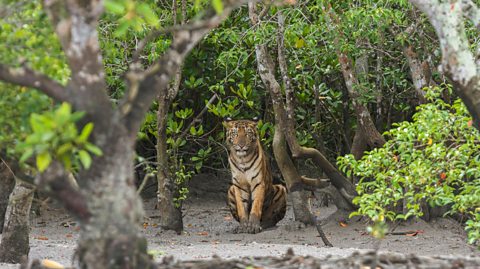Where is Antarctica?
Antarctica is the coldest, windiest, and least populated continent on the planet. It is in the Southern Hemisphere and it is surrounded by the Southern Ocean.
Antarctica's nearest neighbour is the tip of South America, although this is still around 1,000km away. It would take over two days to reach it by boat.
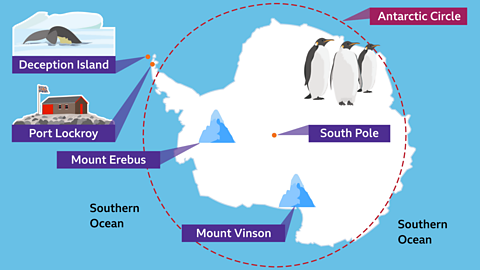
The South Pole
The Geographic South Pole is the most southerly point on Earth. It changes each year because the ice sheet that covers the land is continually moving.
The Ceremonial South Pole is surrounded by flags and stays the same each year. It is a symbolic marker and a place for photo opportunities.

Physical geography
Most of Antarctica is covered in ice because of its cold climate. Antarctica has an average temperature of -30ËšC but it can reach -60ËšC in the coldest parts of the year.
In the summer it is light for 24 hours of the day and in the winter months it is always dark. The continent doubles in size during winter as more ice forms.
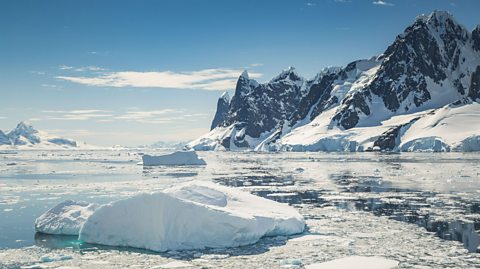
Mount Vinson is the highest mountain in Antarctica - it is 4,892 metres tall. Mount Erebus in Antarctica is the most southerly active volcano in the world. It began to form around 1.3 million years ago.
Wildlife
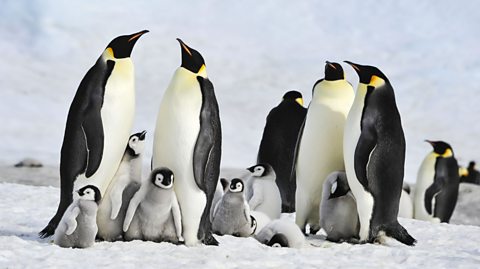
Some animals have adapted to the freezing conditions in Antarctica. For example, there are lots of Emperor penguins living there.
The penguins huddle together for warmth. They take turns to stand on the outside of the group where conditions are the coldest and windiest.
Emperor penguins have two layers of feathers, a good reserve of fat and smaller beaks and flippers. All this helps them keep warm.
Orcas (sometimes called killer whales) can often be found swimming in the Southern Ocean. They hunt prey such as seals who also live on the continent.

Human geography
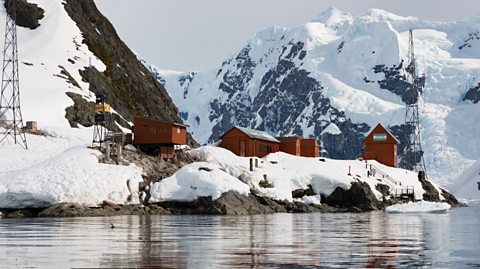
In 1911, Norwegian explorer Roald Amundsen became the first to reach the South Pole. It was one of the most famous expeditions in history.
No single country owns Antarctica. Instead many countries work together to protect Antarctica.
The Antarctic Treaty is an agreement to conserve and manage the continent. It was signed by twelve different nations. Several countries set up research bases to help their studies and exploration.
Antarctica does not have a permanent human population. In the warmer summer months, up to 5,000 scientific researchers are based in Antarctica. This number drops to around 1,000 during the winter months.

Being a scientist in Antarctica
There are no permanent residents in Antarctica, but people do live and work there all the year round. Tasks include releasing a weather balloon to record the temperature and wind speeds. Scientists also study the wildlife like penguins, elephant seals and seaweed.
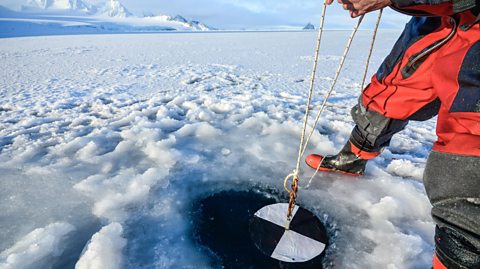
Activity: Quiz – Antarctica
Bitesize Primary games. gameBitesize Primary games
Play fun and educational primary games in science, maths, English, history, geography, art, computing and modern languages.

More on The 7 continents
Find out more by working through a topic
- count8 of 14

- count9 of 14
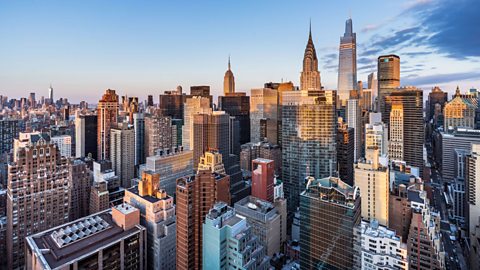
- count10 of 14
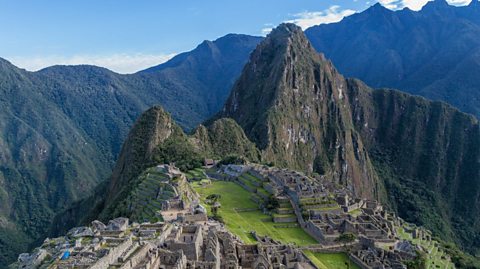
- count11 of 14
